25 Important Things you need to know about Olive Oil

Extra Virgin Olive Oil in Italy and in the world
Extra Virgin Olive Oil and Italy are bonded together by 4000 years of history. The Italian Extra Virgin Olive Oil stands out for its quality and limited production.
Our yearly production is about 200 thousand tons of Olive Oil, compared to the 1.2 Million tons of Oil production in Spain, which counts for almost 50% of world production.
In this blog post, you are going to learn the 25 key aspects of the Extra Virgin Olive Oil. All the information comes from the knowledge and experience I collected and studied through my all life, as my family is a producer of olive oil.
At the end of this blog post, you will have a better understanding of the production of Olive Oil and how to choose wisely when purchasing your next bottle of Extra Virgin Olive oil.
Enjoy your reading and please, share your thoughts and questions with me!
1. What is ‘Extra Virgin’ Olive oil?
Extra Virgin Olive oil, usually abbreviated as ‘EVO’ oil can be considered ‘Extra Virgin’ if it has been extracted by using mechanical (modern technique) or physical methods (like they used to do before with the stone and press) without being treaded chemically or by altering its temperatures. Of course, the only ingredient to produce Extra Virgin Olive Oil, are the olives.
Extra Virgin Olive oil is the highest quality olive oil you can buy, obtained by the FIRST press/extraction of the olives.
From a professional point of view, EVO oil needs to:
- Contain NO more than 0.8% of oleic acid;
- Have 0 defects;
- Have a fruitness level greater than 0;
- Have less than 20% peroxide*.
*Peroxide: the oxide of an element that contains an unusually large amount of oxygen.
2. Unrefined vs. Refined Olive oil
Olive oil can be defined as unrefined and refined.
Unrefined oils are natural and unfiltered like the EVO oils.
Refined olive oil instead is treated (chemically) to remove defects (give by bad quality olives) to adjust it to consumers’ taste.
3. Why is EVO oil different from the other oils?
EVO oil can be categorized as unrefined oil as it is extracted naturally, and usually has a golden-green colour with distinctive smells, flavours and a bitter and peppery finish.
EVO oils must be obtained by the FIRST press of the olives, which is the purest and richest in antioxidants, polyphenols, minerals, and vitamins.
4. What is the difference between EVO oil and ‘Virgin’ olive oil?

EVO oil is obtained by the first press or extraction of the olives, instead, Virgin olive oil is obtained by the second press or extraction of the olives.
I have to be honest, I have just discovered recently that also a second and third press can be possible. Having grown up in the countryside and with my family producing olive oil, I’ve never thought the ‘oil’ could also be produced with many press and chemicals.
5. When are the olives harvested in Italy?
Because of climate change, the Italian olive harvest is brought forward each year. My Grandpa used to tell me, that they use to collect the olives under the snow in December. This year in Italy, the 2019 olive harvest season has already started in September.
6. How are the olives harvested?
By hand with sticks
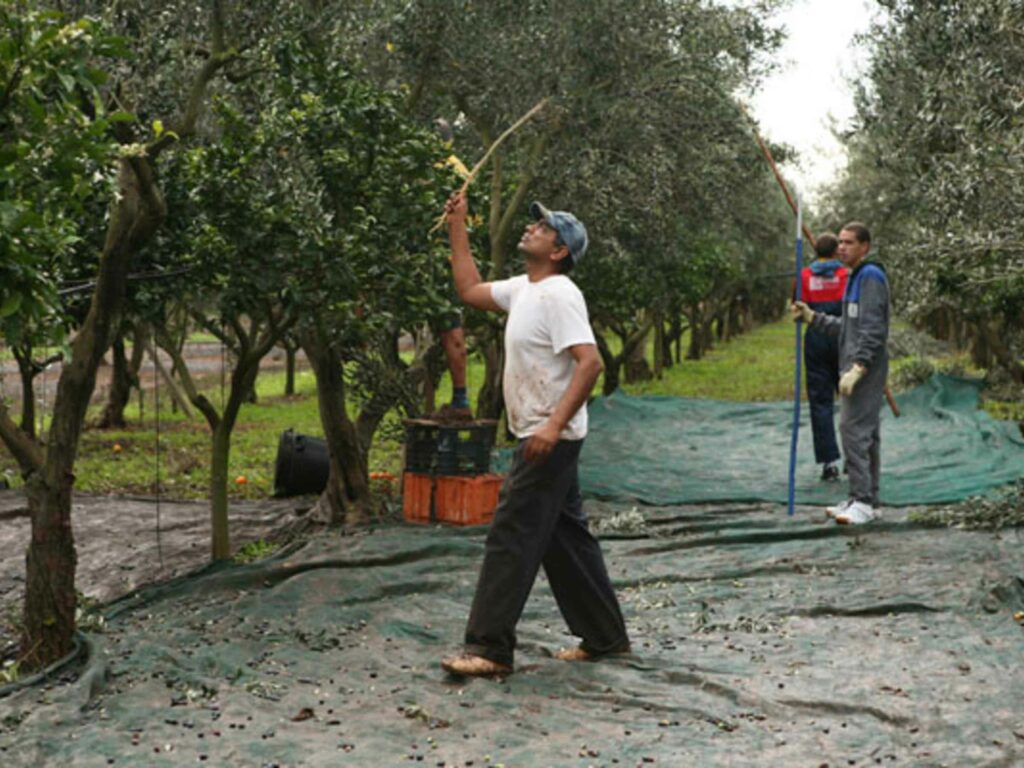
By hand with rakes

By hand with a pneumatic/electric shaker/rakes
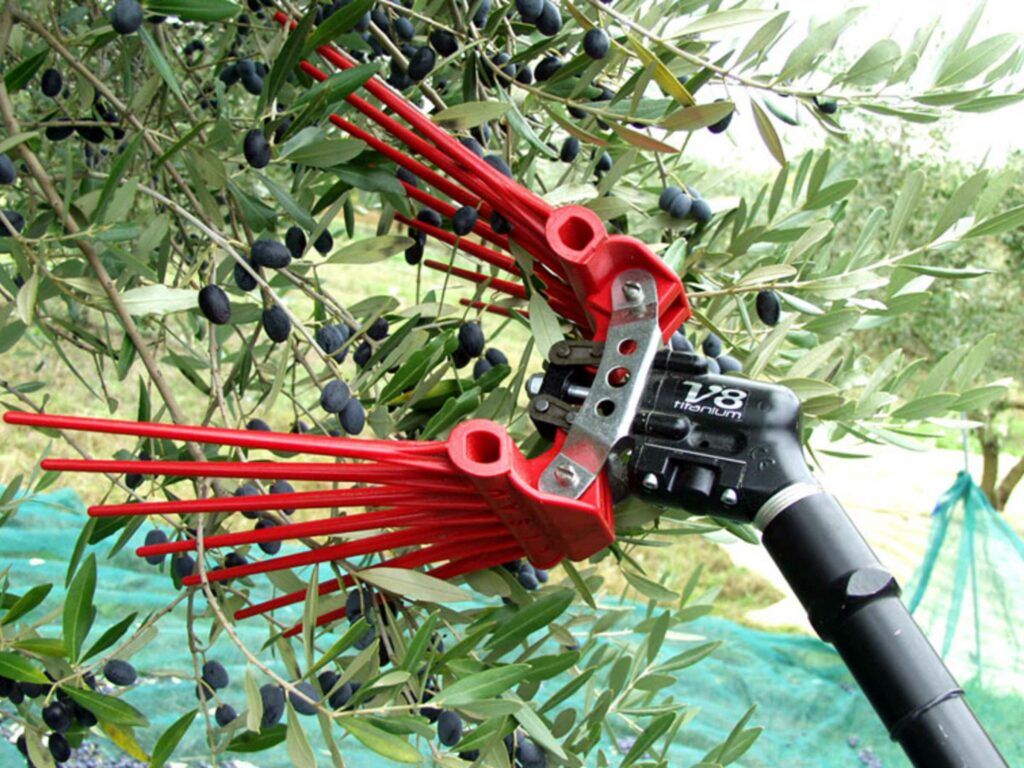
By a mechanical tree shaker
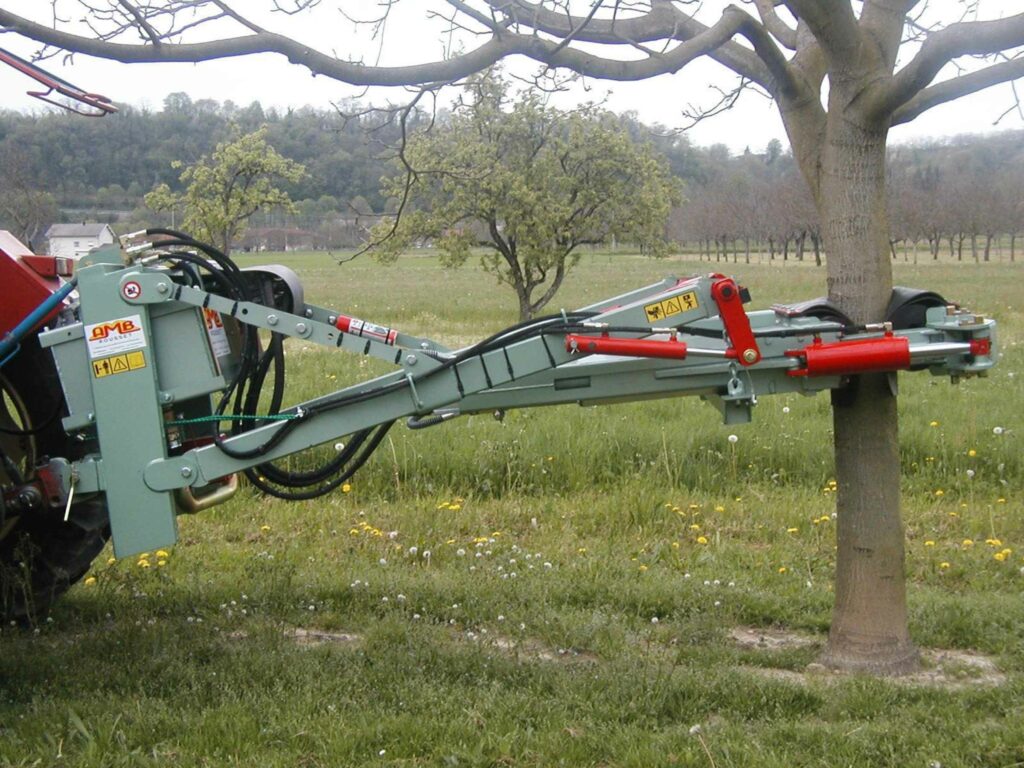
Using the first 3 harvesting methods, the olives fall into ‘reti’ (nets) previously placed around the tree. Once all the olives are fall off, the nets are taken and emptied in open crates or jute sacks. In this way, the olives can ‘breathe’ and prevent fermentation.
Inevitably, together with the olives, there are going to be leaves and twigs in the nest, which must be removed before extracting the oil.

The process of removing the leaves was once all manual work, now most of the olive mills have an automatic leaves’ cleaner that blows the twigs and leaves away.
At my home, as we don’t have a lot of olive trees, the whole process is still the ones used centuries ago! We make sure each olive is healthy and not broken and we remove by hand all the dirt. It’s a long, but rewarding process.
7. Which harvesting method is better for the olives?
Good question! There are different theories. If you’re collecting by hand, the best way is to use hand rakes as they damage less the olives than the pneumatic ones. If the olives are damaged, fermentation can start quicker and affect the oil’s quality. Hence, never collect fallen olives from the ground!
The mechanical tree shaker can only be used with certain olive trees. These trees shouldn’t be too old, and they have to be used to that kind of stress since they are planted. This method is expensive, and can’t be used on ordinary family trees, which often are old and on steep slopes.
In large olive oil production, I believe, the mechanical tree shaker is the best method, as it allows the olives to be collected with no damages and brought directly and quickly to the mill.
8. Where are the olives taken?
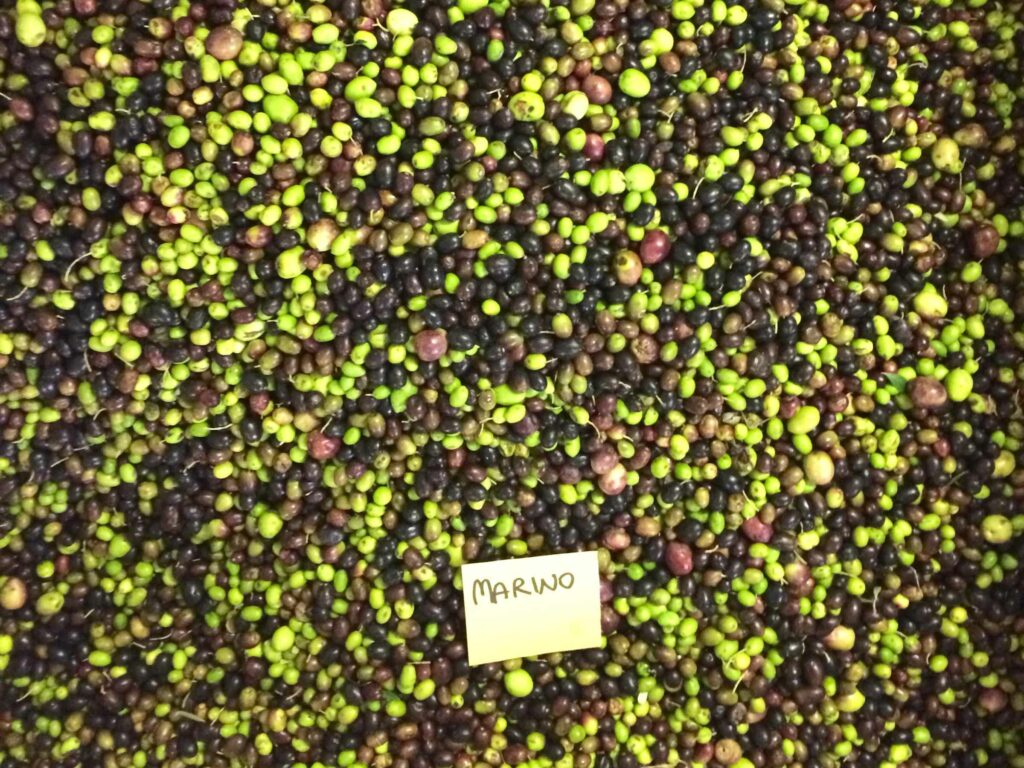
Sometimes I’m asked if Italians have their own olive mill. This case is not possible and has never been the case.
In fact, families and/or companies take their olives to their favourite olive mill. At the olive mill, they have all the machinery needed to extract the olive oil from the olives.
9. How to extract the olive oil?
The main extraction methods used nowadays are the traditional and the ‘continuous’ method.
TRADITIONAL
The traditional way of olive oil production is the method used in the past, and still used by very few old mills also today.
Large millstones crush the pulp and the olive stones, then follow the slow and continuing stirring of the olive paste, called malaxing.
It is often misbelieved that the oil is in the seed, however, it is found in the microcells of the pulp.
During the malaxing which can last for 20-40 min (depending on the olives’ type and ripeness). These cells are crushed, facilitating the release of oil from the vacuoles.
As the next step, the olive paste is distributed onto filter mats, which are stacked in high columns and then pressed considerably so that the oil is extracted.

CONTINUOS
It is also called modern, or continuous method: the olives are crushed with the use of stainless steel rolling hammers.
As the olives are made up of 50% water, and 20-25% oil, after the crushing the oil, which is lighter than the water, is separated from the vegetation water through centrifugation.
Depending on the producer, the oil can be filtered to remove suspended microparticles or just sold like this.
Is important that using this method, the temperature cannot exceed 25-27 degrees in order to guarantee and preserve the natural aromas of the olives.

10. Traditional VS Modern method of olive oil extraction
No doubts! The winner is the Continuos method!
The contact with air during the extractions process of the traditional method starts the oxidation process that will affect the durability of the oil. The phenols will start disappearing sooner and the hygiene isn’t the best.
Let’s take an example: you’ve worked so hard to keep the olive trees healthy and organic, and the season was in your favour. You collected the olives quickly, removed the bad ones and now it’s time to make your EVO oil. You go to the ‘traditional’ olive mill, but you don’t know that before you there were many people who didn’t care about their olive, and perhaps they even gave some pesticides to their plants. When the filter mats will press you healthy and beautiful olives, the quality of your oil will be affected by the olives that were extracted before, and ultimately you will have an EVO oil with defects. Capisc!?
11. How many olives does an olive tree produce in Italy?
In the intense cultivation, used for the industrial EVO Oil production, each plant produces about 200 kg (441 pound, 31.5 stones) of olives per plant.
From my personal experience, small producers and family-owned groves in Abruzzo produce 10/20kg of olives per plant. This is a 10 or 20 times lower production, which definitely affects quality.
12. How many olives do I need to make 1 liter of EVO oil?
On average to make 1 liter of Extra Virgin Olive Oil you need about 8 kg of olives.
What does this mean? If the season was favourable and the average production of olive was 12 kg, you would make 1 bottle and a half of each tree. On our last family harvest in 2018, we only collected 3 kg of olives per plant, so we needed to harvest 3 plants to make 1 liter bottle of Extra Virgin Olive oil.
13. How is the olive harvest in Abruzzo compared to the other parts of Italy?
In Abruzzo having 64% mountainous terrain means that picking olives here is not the easiest task, as the slopes make it harder for the collection. The harsh weather, like hailstones and snow, can break the plants and destroy the harvest. Tree shakers cannot be used as most of the olive trees are old, and not easily accessible. Because of these reasons, for most of the families in Abruzzo, but also of other parts of Italy, it is very hard to still make their own EVO oil.
14. What are the main threats of olive production?

For many years, the production has decreased, due to the new illnesses of the plants.
The Dacus Oleae or called ‘mosca’ is a fly, that lays eggs in the olive and sucks nutrients from it. Once the eggs open up, the small larvas (warms) start digging small tunnels inside the olives, eating and po…ing inside them. This affects hugely the quality of the olive oil, hence why producers decide not to harvest at all!
The Xylella Fastidiosa is one of the most dangerous bacteria in the world. It is carried from tree to tree by a tiny bug. Oil from an infected tree is still safe to consume, but unfortunately, the tree soon dries up and is no longer able to produce olives.
The diseases affecting the olive trees are many more than these, and each year it gets worst, also due to climate change.
15. How are olive trees treated?
Until recent years, the olive trees were the only plants not to be treated at all. The plant would just need some little care and pruning to produce great olives. Unfortunately, due to weather changes and the proliferation of these diseases, olive plants are starting to be cared for.
Some producers use organic treatments such as ‘copper’ (also used for the grapes), or some natural relief, like placing honey traps for the flies.
However, the intensive olive oil production pushed by the market needs has started for many years spraying chemicals on the olive trees. Perhaps, it is something we might not taste, but definitely would affect our body and inclination to food allergies and intolerances.
16. How long should the olives wait before extracting the oil?
To avoid the start of spontaneous fermentation, the olives should be pressed within a few hours after the harvest.
17. How long can I keep EVO oil? Does the olive oil expire?
EVO oil is best used within a year, it maintains its flavour and aromas for a few months. Unlike wine, the more we leave it like that, the more it loses its flavours and aromas. It doesn’t mean it is not good, but it just tastes less intense.
18. The best way to store the Extra virgin olive oil?
The best way to store the EVO oil or any other oils is to store it in bottles and keep it at room temperature (not above 27 Celsius degrees) + dark place.
19. Are there different olive types?

Indeed, Italy is the country with the most olive trees’ varieties (called cultivars) in the world.
Italy has more than 500 variates of olive trees, followed by Spain with more than 300 cultivars.
20. Do all the Italian EVO ‘olive oils’ come from Italy?
We wish! When you buy a bottle of EVO oil, especially in supermarkets, make sure in the label says, ‘100% Italian‘ olives. Some labels might say ‘Olives coming from the EU countries’ and you know that you should avoid them as the source is uncertain.
21. How much does a good Italian Extra Virgin Olive Oil cost?
We in Italy spend at least 13€ for a decent liter of Extra Virgin olive oil: this is a price if we buy it directly from the produces. The price fluctuates between 12 and 15€, depending on the season. Again, this is the price directly from the producer, and I’m referring to the Abruzzo Region. The price might be higher in other parts of Italy.
Most commonly, if you want to be sure to get a great olive oil made professionally, at least expect to spend 10€ for a half-liter (500 ml) bottle.
22. How can I recognize a good Italian Extra Virgin Olive Oil?
Certainly, the colour is not a sign to recognize a good quality EVO oil. The reason for this, that there are more than 500 varieties of olives in Italy, and they all have a different colour: some greener and some toward yellow. The best way to ultimately recognize a good Italian Extra Virgin Olive oil, is to taste it!
23. Does EVO Oil make you FAT?

The answer is definitely, NO! Have you ever seen Italians, Spanish or Greeks? Are most of us fat?
Even though generally, an Italian person uses 13 kg (28.6 pounds, 2 stones) of EVO Oil per year: we are usually not overweight, and definitely, if we are isn’t for the olive oil.
For South Italian families, having quality olive oil at home is essential and vital. It’s the secret of our Mediterranean diet, and for making delicious, tasty & healthy food.
24. How do I taste the EVO olive oil?
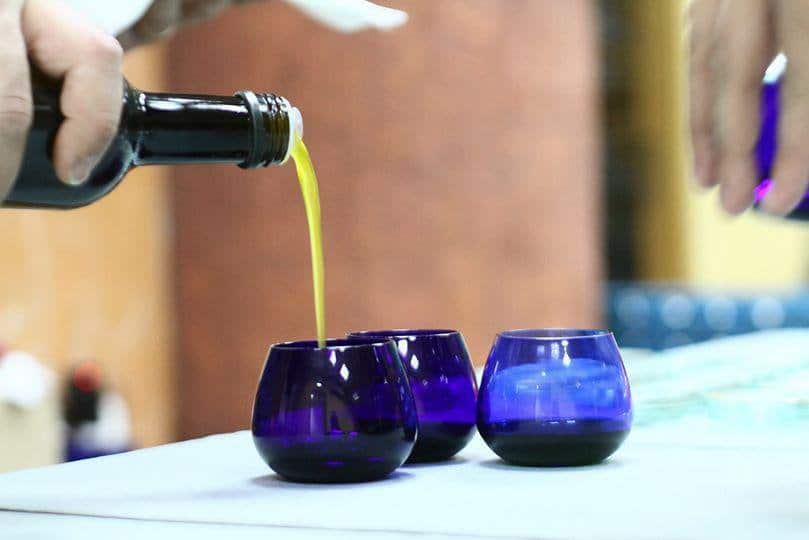
First of all, the olive oil shall be tasted plain, without bread. Bread or anything else affects aroma and flavours. Would you do a wine tasting by mixing your wine with lemonade or just even ice? No!
The way to start the tasting is by pouring some EVO oil in a glass. The next step is to cover the glass with one hand and rotate the glass back and forth on the other hand. The aim is to heat the oil at our body temperature. In this way, the olive releases stronger aromas. Do this for 30-40 seconds, then put your nouse in, and you should smell some aromas: like tomatoes leaves, almonds, fresh grass, etc. depending on the olive variety you have in front of you.
The following step is to drink some oil and let it drop on your tongue. At this point, you should close your teeth, and make two deep inhale through your closed teeth.
It sounds weird, and the first time it is! By doing this, you allow oxygen to come in and you will feel and taste the aroma and flavours better. You might cough, but do not worry: this completely normal! Hopefully, if it is a good EVO olive oil, you will feel some spiciness/peppery feel in your throat. (I’ll upload a video of the tasting as soon I can).
I suggest attending a professional olive oil tasting in Italy. I usually run the tasting during the culinary tours I organize in Abruzzo. On some special occasions, we organize Extra Virgin Olive oil tasting day with professional Oil’s sommelier. Yes, there are even sommeliers for the olive oil.
Understand the terms of the olive oil and harvest of the olives: Download a summary of the most important used terms
25. Where can I find a good Italian Extra Virgin Olive Oil?
This is a hard question! I advise not to look in the supermarket, perhaps look for small Italian stores that import EVO oil and other products directly from Italy. I suppose the best is while you visit Italy, you taste good olive oil from someone you trust: you should take the opportunity and take some bottles back with you, or ask them to ship Italian Extra Virgin Olive oil bottles to your home.
If you would like a great Extra Virgin Olive Oil from Abruzzo, you can get in contact us and we’ll ask our trusted producers & friends if they still have some availabilities.
26. Handpicked Italian Products Delivered to Your Doorstep
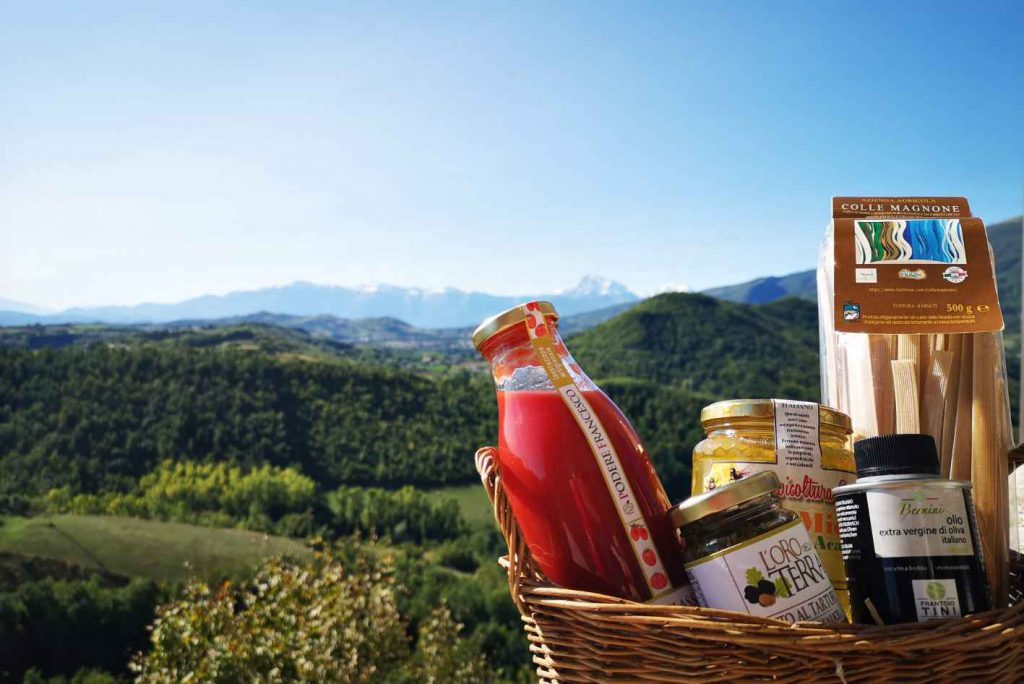 We have carefully sourced Enogastronomic products that tell the story of the producers, where they come from and the generations of tradition & knowledge used to produce them here in the heart of Italy. Our Tasting Experience Boxes are thoughtful gifts that can bring seasonal, locally produced products from the heart of Abruzzo to your family & friends around the world. For more info, please visit our Food Box Experiences page.
We have carefully sourced Enogastronomic products that tell the story of the producers, where they come from and the generations of tradition & knowledge used to produce them here in the heart of Italy. Our Tasting Experience Boxes are thoughtful gifts that can bring seasonal, locally produced products from the heart of Abruzzo to your family & friends around the world. For more info, please visit our Food Box Experiences page.
Is there a way to participate in the olive harvest in Italy?
The olive picking season in Italy is limited to a few weeks between the end of September and beginning of October, through each year. It is a bit uncertain when the harvest will start, so it’s hard to make plans. In Abruzzo, we are lucky as with both mountains and seaside, our olive harvest lasts longer and the olives in the mountains tend to ripe later than on the coast.
If you are thinking to join the olive harvest in Italy, get quickly in contact with us at Experience BellaVita and we will organize for you an authentic olive harvest experience with locals and with professional olive oil tastings.
Watch the Italian Olive Harvest in action:
Behind a simple bottle of Extra Virgin Olive Oil
I hope you’ve enjoyed this blog post and now you know exactly, what an extra virgin olive oil is. Moreover, how is it made, wha is the process and the useful tips. You’ve just experienced the big amount of work behind a simple bottle of pure Extra Virgin Olive oil.
We are what we eat, and that’s definitely right.
Quality Olive oil for us Italians and Mediterranean people means LIFE and a vital part of our life.
Please, share this post to inform your friends and loved ones. Make your life healthier, and choose wisely your next bottle of EVO oil.